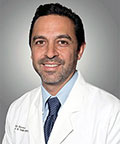- Home
- Foot & Ankle Conditions
- Pediatric Conditions
- Growth Plate Fractures
Growth Plate Injuries: Causes, Symptoms, & Treatment Options
- Published 6/1/2018
- Last Reviewed 12/14/2023

What are Growth Plates?
Growth plates, also known as epiphyseal plates, are soft points on the end of a child's bone that form solid bone as your child matures. Growing bones each have one growth plate at either end.
A suspected injury to the growth plate needs to be evaluated by a specialist right away. An injury to a growth plate can cause it to harden and “close” prematurely, meaning it stops producing new bone before your child is done growing. If left untreated, a growth plate injury could stunt bone growth.
- How common are growth plate injuries?
- How do growth plate fractures of the foot occur?
- What are the symptoms of a fractured growth plate?
- How can the podiatrists at University Foot & Ankle Institute diagnose your child's growth plate injury?
- What are the common types of growth plate fractures?
- What are the treatments for a growth plate foot fracture?
- Recovering from a growth plate fracture
- Choose UFAI for the best pediatric podiatrists
- Growth plate injury FAQs
- Can adults suffer growth plate injuries?
- Can you play soccer on a growth plate ankle injury?
- Does growth plate injury affect height?
- How to prevent growth plate injuries?
- How long does a growth plate injury take to heal?
-
ABFAS® Board Certified in Foot Surgery and Reconstructive Rearfoot and Ankle Surgery. and Director of University Foot and Ankle Institute
Dr. Bob Baravarian DPM, FACFAS is a Board-Certified Podiatric Foot and Ankle Specialist. He is an assistant clinical professor at the UCLA School of Medicine and serves as Director of University Foot and Ankle Institute.
Dr. Baravarian has been involved in athletics his entire life and played competitive tennis in high school and college. He has an interest in sports medicine, arthritis therapy, and trauma/reconstructive surgery of the foot and ankle. He is also fluent in five languages (English, French, Spanish, Farsi, and Hebrew),
-
ABFAS® Board Certified in Foot Surgery and Reconstructive Rearfoot and Ankle Surgery. and Director of University Foot and Ankle Institute
Dr. Bob Baravarian DPM, FACFAS is a Board-Certified Podiatric Foot and Ankle Specialist. He is an assistant clinical professor at the UCLA School of Medicine and serves as Director of University Foot and Ankle Institute.
Dr. Baravarian has been involved in athletics his entire life and played competitive tennis in high school and college. He has an interest in sports medicine, arthritis therapy, and trauma/reconstructive surgery of the foot and ankle. He is also fluent in five languages (English, French, Spanish, Farsi, and Hebrew),
 Dr Franson located in Valencia is very professional. He takes the time to listen to the patients and confirms his diagnosis and...Cheryl S.
Dr Franson located in Valencia is very professional. He takes the time to listen to the patients and confirms his diagnosis and...Cheryl S. Keep doing such amazing workAngel C.
Keep doing such amazing workAngel C. The referrals came through quickly and they called me to book an appointment for physical therapy which nobody else does!Catriona D.
The referrals came through quickly and they called me to book an appointment for physical therapy which nobody else does!Catriona D. Good.Lisa E.
Good.Lisa E. ExcellentRichard A.
ExcellentRichard A. I like him and will
I like him and will
Recommend him to friendsMaureen K. Doctor is very personable and agreeable. Great professional.Joel C.
Doctor is very personable and agreeable. Great professional.Joel C. Dr. Nalbandian is the best. I had shots in both ankles and she was so very gentle. Very warm and friendly.Michelle G.
Dr. Nalbandian is the best. I had shots in both ankles and she was so very gentle. Very warm and friendly.Michelle G. Thorough, competent and my Feet are feeling better. I valued the shoe recommendations too.Nancy R.
Thorough, competent and my Feet are feeling better. I valued the shoe recommendations too.Nancy R. Very pleased with UFAIVirginia H.
Very pleased with UFAIVirginia H. Excellent care and super smart people. They got me back on my feet, literally. My heel pain is gone, finally and they made it h...Greg W.
Excellent care and super smart people. They got me back on my feet, literally. My heel pain is gone, finally and they made it h...Greg W. What an awesome group of folks! Two surgeries in two years and they feel more like family than PT. Can't say enough good thin...Cyn S.
What an awesome group of folks! Two surgeries in two years and they feel more like family than PT. Can't say enough good thin...Cyn S.
